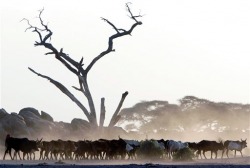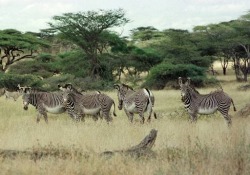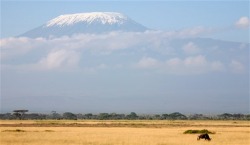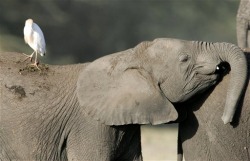Kenya: Geography and Environment
Title.
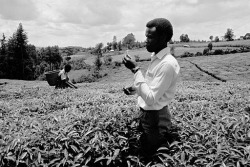
Sarah Ambrose
Hjelmgren
World History: Period 4
May 4, 2009
Geography and Environment of Kenya
Kenya’s large amount of unique landscapes makes it a popular destination for travelers today. There are many different landforms and wildlife that thrive in this beautiful country in eastern Africa. The vast landscape contains the Great
Rift Valley, the coast of the Indian Ocean, the Highlands, and is bordered by Somalia and Tanzania. The temperature varies depending on the many different regions that have formed in this geographically diverse country.
The main regions are the Highlands in the west, and part of the Serengeti to south. Although, Kenya is greatly dominated by the Great Rift, which runs from north to south all the way through the length of Kenya. “The rift is the result of shifts in the earth’s surface” (Bowden). Volcanic peaks are a main cause of the tectonic plates shifting. The valley boasts many lakes, which are home to many forms of wildlife, especially birds and fish. The temperature is somewhat tolerable during the day, but is still hot and humid, and during the night the temperature drops. The valley is one of the countries characteristic features.
It bisects the Kenyan Highlands, which run from east to west. The Highlands are a large plateau that “compromise one of the most successful farming productions in Africa” (Bowden). The amount of population is a key factor that ties into the success of crop production in the Highlands, along with its moderate climate and fertile valleys. Living in the highlands is easier because of the generally mild weather. Kenyan coffee is one of the many crops grown on these hills in the Highlands. The Great Rift Valley and the Highlands of Kenya are a major part of
its success.
The main land of Kenya is very hot. It is tropical on the coast, and has open expanses of grassland known as the savannah. Lions, gazelle, wildebeest, zebras, giraffes, and elephants make their home in this region of Africa. The soil is rocky, and is mainly compromised of scattered brush and thorn trees.
December through February and June through October are the hot and dry seasons, and March through May is the rainy season, which can lead to flooding. The temperature ranges mainly from about 75 to 90 degrees Fahrenheit. This area has a very beautiful backdrop and landscape, but isn’t very well populated because of the inconsistent weather pattern.
Over time, two things have changed drastically, “Deforestation, and global climate change” (World Rainforest Movement). The vegetation is a main cause of the amount of precipitation that falls each year. Since the forests are being cut down, there is no rain, which is causing drought, and starvation of the population. Also, the water in Kenya is not clean. It is filled with pesticides and fertilizers which can potentially harm the human and wildlife populations. Even though the current status of Kenya might be hanging on a thin thread, the reserves and parks will continue to thrive for years and years to come.
Bibliography
"The Africa Guide Kenya- - Regions and Towns." African Safaris, African
Tours, Africa Holidays and Africa Travel. <http://www.africaguide.com/country/kenya/regions.htm>.
This source was helpful because it gave me information about the different regions, mainly the Great Rift Valley and the Coastline.
Bowden, Rob.
Evans Brothers Ltd., 2007.
This source was helpful because it provided information on the basics of landforms and the climate.
Geography and Map of Kenya." Geography Home Page - Geography at About.com.
05 May 2009 <http://geography.about.com/library/cia/blckenya.htm>.
This source gave me a lot of information on the geography of Kenya.
"Geography." Kenya safari guide - Kenyalogy. <http://www.kenyalogy.com/eng/info/geo.html>.
This site was helpful because it gave me information on the Great Rift Valley and the Highlands.
"Geography of Kenya." World Travel. <http://travel.mapsofworld.com/kenya/geography-of-
kenya.html>.
This source gave me ideas on the location and physical features of Kenya.
"Kenya Season and Climate - Wildland Adventures." Wildland Adventure Travel - Costa Rica, Turkey, India, Peru | Worldwide Trips, Tours, Vacations & Africa
Safari. 2009. <http://www.wildland.com/trips/africa/ken_climate.aspx>.
This site was helpful because it provided information on the different seasons like the wet and dry seasons, and what the effect of each season was.
"Kenya: The roots of the current drought." World Rainforest Movement.
Feb. 2006. <http://www.wrm.org.uy/bulletin/103/Kenya.html>.
This source game information on the current status of Kenya, and it there was any issues that are a threat to the people.
Last updated by Sarah Ambrose on May 22, 2009
